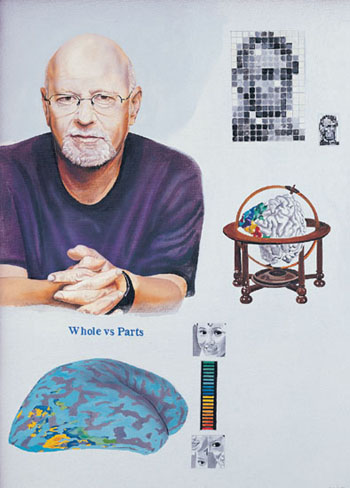Are you a journalist? Please sign up here for our press releases
Subscribe to our monthly newsletter:

"The brain is like an artist," says Prof. Rafael Malach of the Neurobiology Department. "It can construct different visual images from the same optical information received from the eyes." This phenomenon is demonstrated most vividly by optical illusions.
Malach is interested in how the brain performs image-creating processes. He has made several important findings in this field, including major contributions to the identification of the regions in the brain that are involved in object recognition. Using an important tool in this area of research, fMRI (functional magnetic resonance imaging, a method that enables scientists to peer noninvasively into the human brain), his group has begun to understand how these regions function.
Interestingly, Malach and his students have shown that object recognition in the human brain is hierarchical. If, for instance, one looks at a feature of a face – an eye or a nose – the regions in the brain that are low in the hierarchy (i.e., deal with relatively "primitive" visual stimuli) will be activated. However, if one looks at the whole face, regions that are more "conceptual" or abstract will come into play. Malach has demonstrated that at the highest level of hierarchy nerve cells are sensitive to the image of the entire object and not just to its individual parts.
Another important finding is a new kind of "topography," or functional organization, in which different object-recognition areas in the brain are activated according to the object's location in the visual field. If the object is in the center of the visual field, face-recognition areas are more likely to be activated, whereas if it is on the periphery, other object-recognition areas are likely to be triggered.
Prof. Malach’s research is supported by the Mary Ralph Designated Philanthropic Fund; the James S. McDonnell Foundation; the Nella and Leon Benoziyo Center for Neurosciences; and the Murray H. and Meyer Grodetsky Center for Research of Higher Brain Functions.